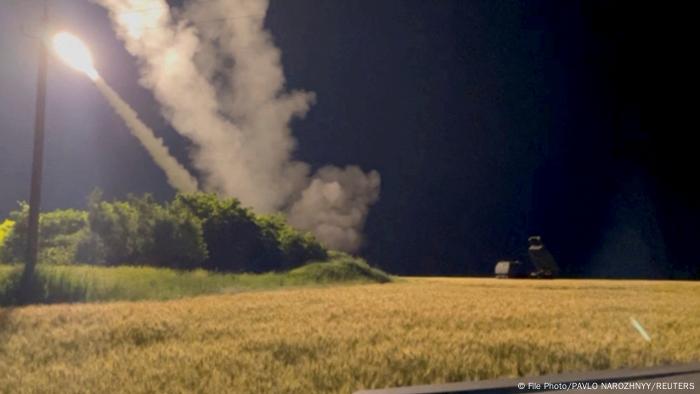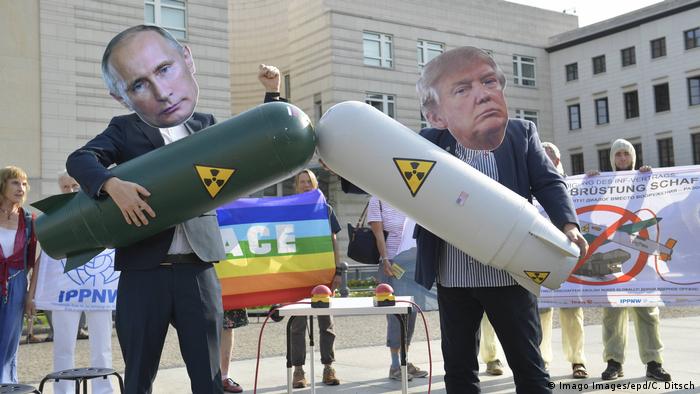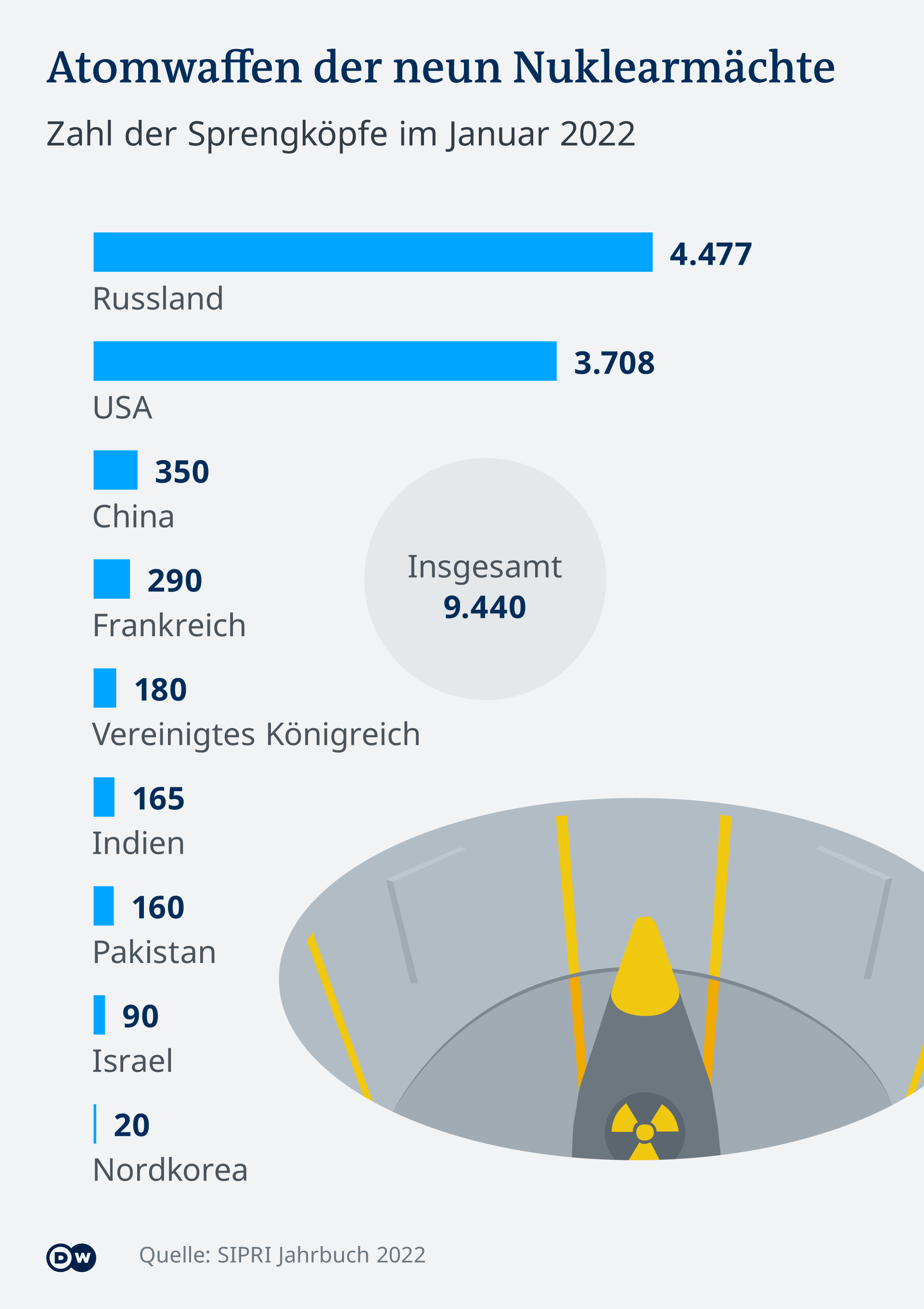The New START agreement provides for mutual nuclear arsenal controls between the US and Russia. With its suspension, the only remaining nuclear disarmament treaty is at stake.

Head of a discarded US nuclear missile of the type Titan – the New START agreement obliges Russia and the USA to limit their nuclear warheads to a maximum of 1550 each
Russia is trying to send a double message: the United States should “temporarily” no longer control the Russian nuclear arsenal. However, the provisions of the treaty will be adhered to and its “unique role” as an “important instrument for maintaining international security and stability is greatly appreciated,” the Russian Foreign Ministry said. But it's the first time the Kremlin has suspended US inspections, and the move shows just how strained the Ukraine war is on relations between the two countries.

A more relaxed time: the then Presidents Barack Obama (left, USA) and Dmitry Medvedev (Russia) signed the New START agreement in 2010
The trigger for the step, Russian Deputy Foreign Minister Sergey Ryabkov added on his ministry's website, was that the United States had announced an inspection visit in the next few days. Against the background of the current tensions between the two countries, this was an “open provocation”. You have to know that the mutual controls have been suspended since 2020, not because of geopolitical conflicts, but because of the corona pandemic. A spokesman for the US State Department pointed this out again and added that despite the tensions, this important part of the cooperation should be maintained.
Russia sees “unilateral advantages” for the USA
START stands for Strategic Arms Reductions Treaty. The 2010 agreement obliges both countries to reduce their nuclear warheads to a maximum of 1,550 each and the number of delivery systems such as ICBMs, submarine-launched missiles and bombers to 800 each. In order for this to happen, the treaty allows each side to carry out up to 20 inspections in the other country per year.
The current situation gives the American side “unilateral advantages”, according to the Russian Foreign Ministry, because Russia will be “deprived of its right to inspect US territory”.

US HIMARS multiple rocket launcher in action in the Ukraine against the Russian military: The war itself is officially no reason for Russia to suspend controls
This is where the Ukraine war comes in, but only indirectly. The war itself, in which Russia as an aggressor and the US as a supporter of Ukraine are on opposite sides, is no reason for Russia to suspend controls, at least this is not given as an official justification. Moscow only points out that because of Western sanctions, Russian inspectors have great difficulty entering the United States. In addition, the employees there are at risk from increasing corona infections. If the current problems are solved, the controls in Russia will be allowed again “immediately”.
The USA withdrew from important agreements
The New START agreement is the tentative culmination of a long line of nuclear disarmament efforts between the world's two most important nuclear powers. There were the two START agreements around the 1990s. But START-I expired in 2009 and START-II never came into effect. The result was the follow-up agreement New START.
The USA and the Soviet Union had already concluded nuclear disarmament treaties in the 1970s, including the 1972 ABM treaty to limit missile defense systems.

Protest in Germany in 2019 with Putin and Trump masks against the American withdrawal from the INF Treaty
The United States unilaterally withdrew from this in 2002. In 2019, under Donald Trump, Washington stepped out of the ban on ground-launched intermediate-range missiles, INF. And in 2020, Trump canceled the Open Skies Treaty, which allowed mutual reconnaissance flights as a confidence-building measure. The only remaining bilateral nuclear disarmament treaties between the USA and Russia today is the New START agreement.
Biden wants to involve China
But his future is also uncertain. New START is initially valid until 2026; the contract was only extended last year by a maximum of five years. And according to the Russian statement, nothing will change about that, regardless of the Ukraine war or sanctions.
But what comes after 2026? Russian Foreign Minister Sergei Lavrov recently complained that Washington had not yet offered any new negotiations. US President Joseph Biden said about a week ago that his government was ready to negotiate a successor agreement, but that Russia's war against Ukraine represented an attack on the cornerstones of the international order. Biden also called on China to participate in a post-New START.

Russia and the US have nuclear arsenals that far exceed those of other nuclear powers
China's nuclear arsenal is significantly smaller than that of the US and Russia, the Stockholm peace research institute SIPRI estimates its inventory of warheads at 350 in its latest annual report for 2022; But China is catching up quickly. And against the background of the West's concerns that the People's Republic could annex Taiwan by force, Biden is very interested in involving Beijing in disarmament negotiations. However, Beijing rejects this, but so far also Russia, which has argued in the past that the French and British nuclear weapons would also have to be included, together almost 500 warheads.
The use of nuclear weapons has become more likely
Compared to the status in the 1980s during the Cold War, when there were almost 70,000 nuclear warheads worldwide, according to SIPRI, there are now just under 13,000 in the arsenals. The decline is not reassuring. Because technical modernization compensates for the former mass. Nuclear weapons are much more accurate today. And the development of “mini-nukes”, which are not intended to destroy an entire country, but rather to bring a geographically limited tactical advantage in a battle, makes the use of nuclear weapons perhaps more likely today than they were then.

Military parade in Moscow in 1985 with nuclear missiles: At that time there were around 70,000 nuclear warheads in arsenals worldwide. But the world hasn't gotten any safer since then
The latest SIPRI annual report saw “clear indications” as early as early 2022 that the reduction in global nuclear arsenals since the end of the Cold War “has come to an end”. It goes on to say, “All nuclear powers are in the process of expanding or modernizing their arsenals, and most of these states are increasing their pro-nuclear rhetoric and giving nuclear weapons a more prominent role in their military strategies. A very worrying trend.” p>
This was a few weeks before the Russian invasion of Ukraine on February 24th. And Moscow made it clear in the Ukraine war that it does not rule out the use of nuclear weapons.

